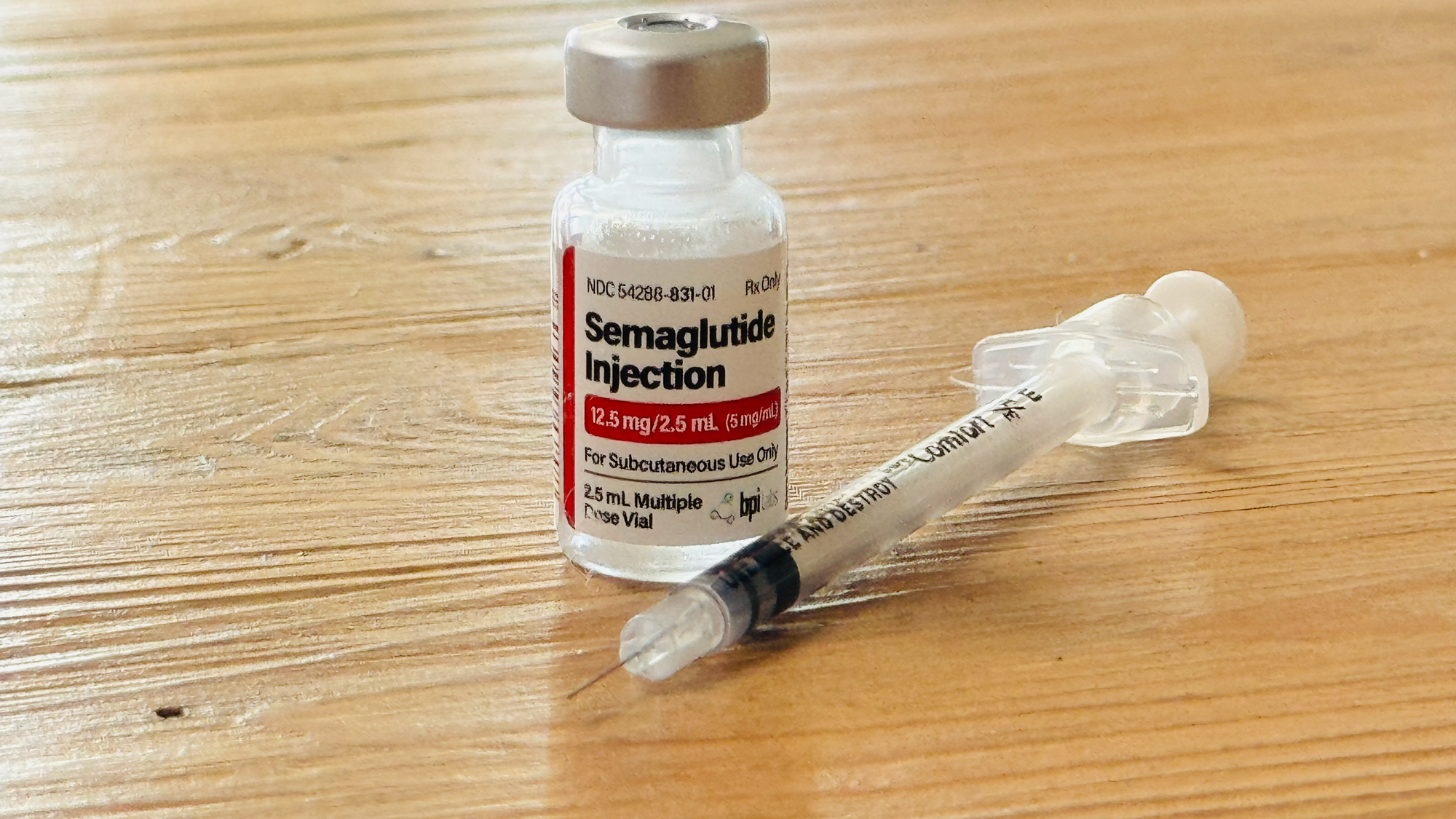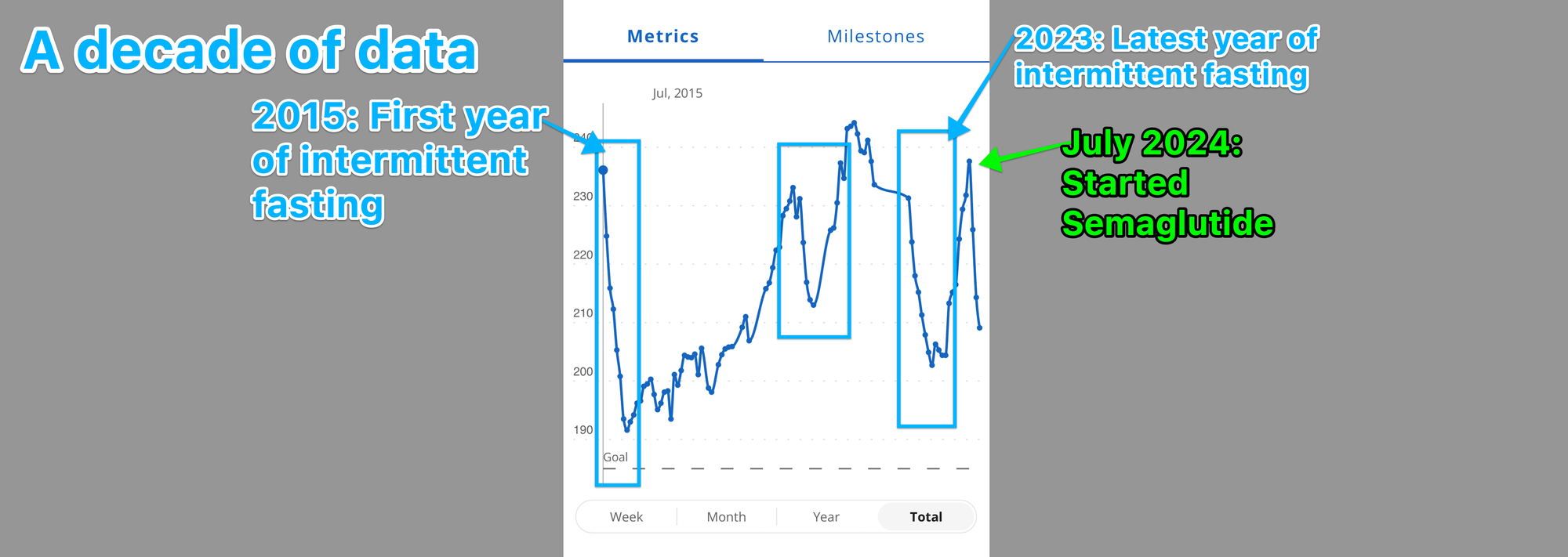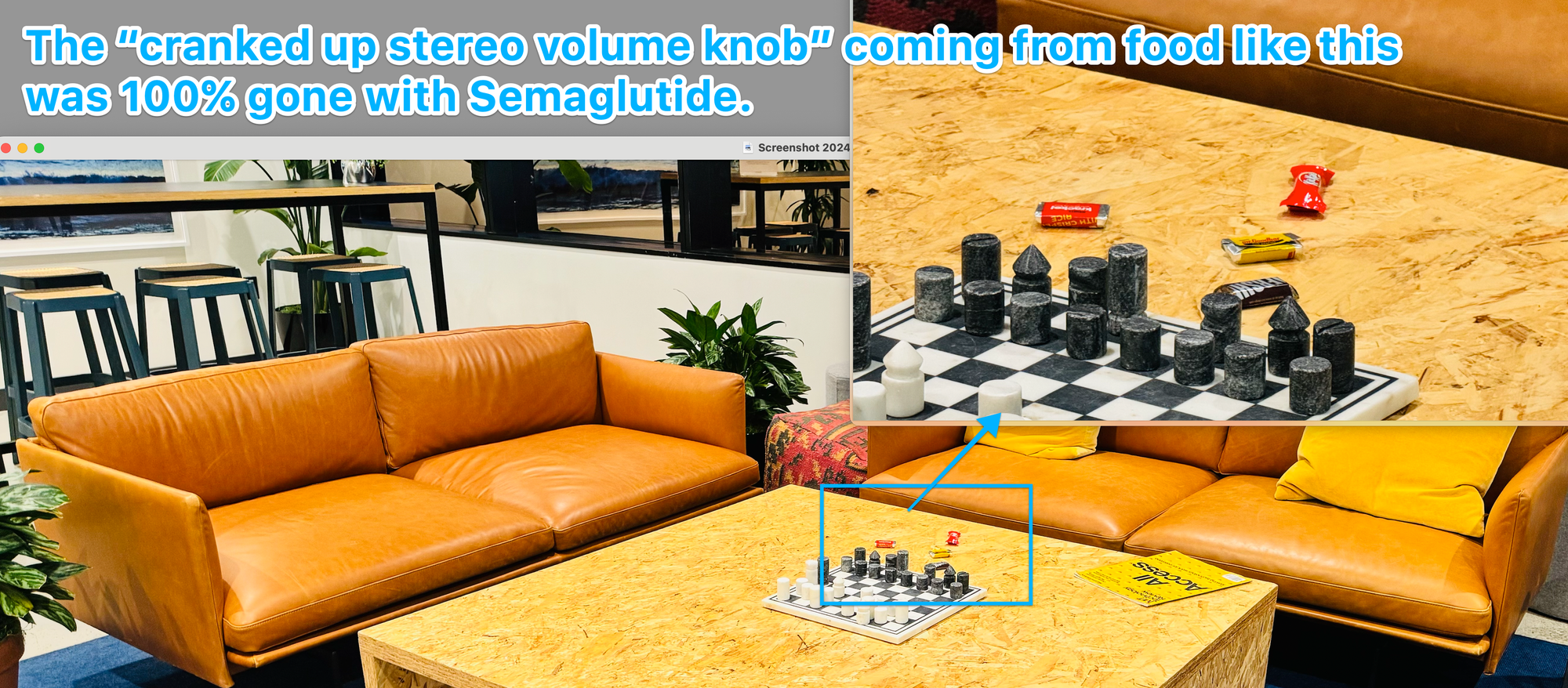Surrendering to Ozempic

It's not easy to admit defeat, but with the acknowledgment comes an opportunity to find an alternate path forward.
I've tried many strategies to feel like I'm in control of my body and achieve a target weight, from rowing 1,000,000 meters in 8 months to fasting every other day in 2023, being in ketosis for 2 years in 2017 (and going down the exogenous ketones rabbit hole)... even starting an intermittent fasting journey a decade ago in 2014.
These strategies have worked... until they haven't. I find that each time I've gotten to a target weight and body fat goal (for me, that's 195 lbs), my body wants to reset right back to 250 lbs.
My mind wants me to be 195 lbs. My body wants me to be 250 lbs.

So I've finally surrendered to Ozempic. Well, not actually Ozempic – that's the brand name everyone knows the underlying drug by, which is called semaglutide. More on the differences below.
Semaglutide and its newer and more powerful cousin Tirzepatide, are in a new class of drugs known as "Glucagon-like peptide-1 (GLP-1) agonists." These drugs work by mimicking the action of the GLP-1 hormone, which the body releases after eating to help regulate blood sugar levels.
You might've heard GLP-1 drugs by their brand names, like:
- Ozempic (Semaglutide - approved for treating Type 2 diabetes)
- Wegovy (Semaglutide - approved for treating obesity)
- Mounjaro (Tirzepatide - approved for treating Type 2 diabetes)
- Zepbound (Tirzepatide - approved for treating obesity)
Want to learn more about what these drugs are and how they work? The absolute best deep-dive primer I've found on GLP-1 drugs is this Acquired episode on Novo Nordisk's Ozempic, which goes into the history of the drugs and how Semaglutide and Tirzepatide compare)
What life is like on Semaglutide
I've written in the past about the experience of "having food talk to you" – it's effectively like a volume knob on a stereo that's cranked up to eleven. When you walk by food, it puts off a kind of energy that makes it really hard to ignore. And it's constant – there's very little relationship between how full or hungry I am and the volume of that stereo knob, although it's definitely exacerbated when I'm hungry.
Semaglutide turns the volume down. To maybe a 2 or 3 on a scale of 10. It's incredibly freeing not to have that stereo blasting nonstop at 11. I first noticed this right after starting Semaglutide when I was walking by a table at our office WeWork where someone had left a few pieces of candy on the table. In the past, I would've mindlessly scooped one of them up and popped it into my mouth. But as I looked at them on the table, I realized that the food looked exactly the same to me as the chess pieces on the board. There was no stereo volume knob cranked up to eleven. It was the very first time in my life that I was able to feel that way.

Trying to get insurance coverage – and failing
I tried with my primary care physician for two years to get insurance to cover the cost of GLP-1 drugs. No dice. I think this'll change as it becomes more normalized and obvious how life-changing these drugs are, but for now, I would've had to shoulder 100% of the cost, which can be as much as $1,000/month.
Fortunately, there's a (temporary) FDA approval for compounding pharmacies to manufacture GLP-1 drugs. This effectively means they can make and sell generic versions of the brand name drug while it's listed by the FDA as being supply constrained. Not all compounding pharmacies are created equal – I did research on a number of them, including Ro.co, AlanMeds, Hims, Eden and settled on Henry meds, which charges $297/month and often offers coupon codes for $100 off the first month. I've had a good experience with it.
What's next for me
I'm very aware that if I were to stop taking Semalgutide, the volume knob would be cranked right back up to eleven. I'd love to find a longer-term solution that didn't require a drug intervention, but for now I'm very thankful it exists. I'll share an update when I have one!